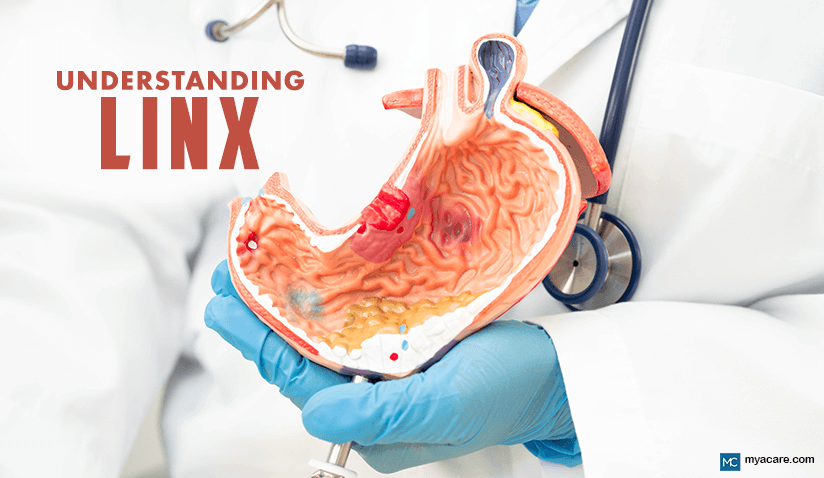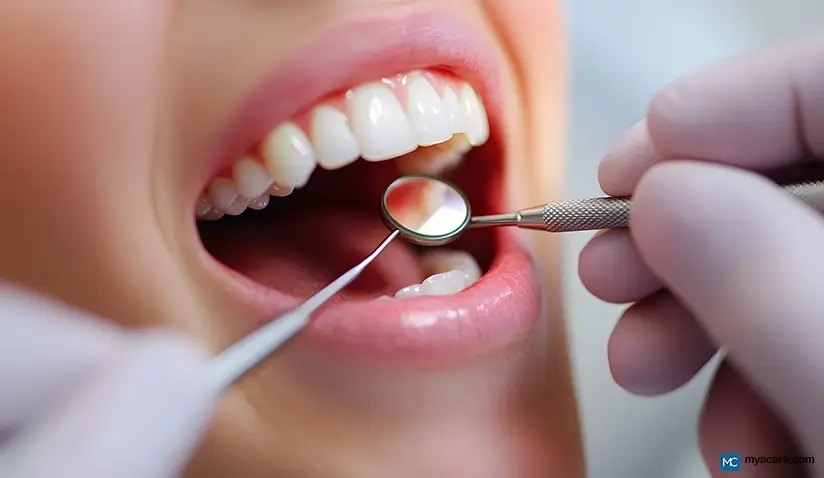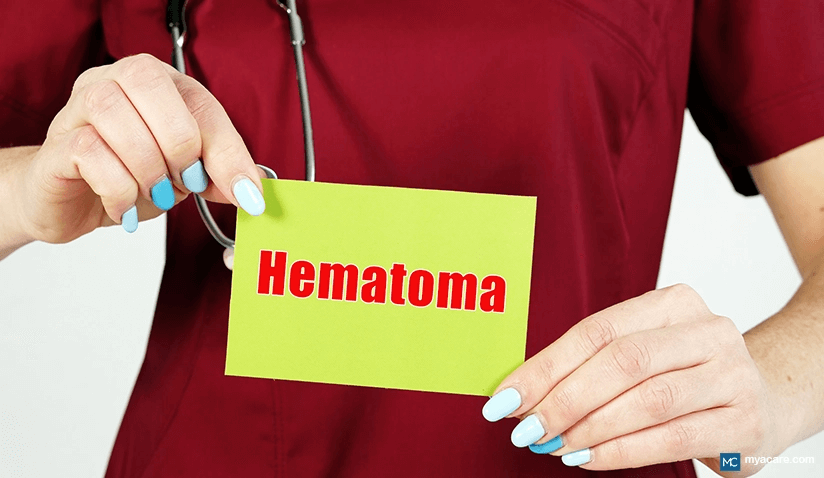LINX: A Minimally Invasive GERD Solution?

Medically Reviewed by Dr. Sony Sherpa, (MBBS)
What to Expect After the Procedure
Who is Not a Candidate for LINX Surgery?
Gastroesophageal Reflux Disease (GERD), a common digestive ailment affecting millions worldwide, occurs when stomach acid or bile irritates the esophageal lining, leading to heartburn, regurgitation, and discomfort. GERD is prevalent among adults, with an estimated 20% of the population experiencing it regularly. Symptoms can vary from slight discomfort to severe pain and potentially have a significant impact on daily life.
Traditional treatment methods for GERD include lifestyle changes, over-the-counter medications such as antacids, and prescription medications like proton pump inhibitors (PPIs) and H2 blockers. While these treatments offer temporary relief, they do not address the underlying cause of the condition - the malfunctioning lower esophageal sphincter (LES). In severe cases, surgical interventions like Nissen fundoplication may be recommended. However, for many individuals, these options do not always provide lasting relief or come with significant risks and long recovery periods.
The LINX procedure, which utilizes a magnetic sphincter augmentation (MSA) device, is a treatment available for individuals with GERD who have not achieved satisfactory results with standard therapies. It is designed to offer long-term relief from GERD symptoms, serving as a potential alternative to traditional surgical methods.
Understanding the LINX Procedure
The keyhole surgery involves the implantation of the LINX device, a flexible ring of small magnetic beads, around the lower esophagus, where the LES is located. The magnetic attraction between the beads forms a barrier that helps prevent stomach acid from backing up into the esophagus. This seal strengthens the LES, helping it to function properly and preventing acid reflux. Unlike traditional treatments that mask symptoms, the LINX esophageal sphincter device addresses the root cause of GERD by restoring the proper function of the LES.
The magnetic ring temporarily opens as food and liquids move through the esophagus. After swallowing, the magnetic force closes the ring, ensuring that the stomach contents remain in the stomach.
Surgical Procedure Details
Preparation
To confirm GERD as the cause of symptoms and assess suitability for the LINX procedure, patients will receive a thorough evaluation, encompassing endoscopy, manometry (measures esophageal pressure), and pH testing. Preoperative consultations will help determine the patient’s readiness for the procedure and what to expect during recovery.
The Surgery
The LINX procedure is a laparoscopic procedure that usually lasts about an hour and is performed under general anesthesia. Through small abdominal incisions and guided by a camera, the surgeon places the LINX device around the LES.
Since the procedure is minimally invasive, patients typically experience less pain, shorter hospital stays, and a faster recovery compared to traditional surgeries like Nissen fundoplication.
Aftercare
After surgery, patients are usually monitored for one to two days before being discharged. Postoperative care includes a soft-food diet initially, followed by a gradual return to normal foods as the body adjusts to the implant. Pain management and follow-up appointments are scheduled to ensure proper healing and effective functionality of the device.
Eligibility Criteria
Individuals with moderate to severe GERD, particularly those unresponsive to medication or lifestyle adjustments, may be suitable candidates for the LINX procedure. Ideal candidates typically have a functioning LES but suffer from its weakening over time. Candidates should also be free from certain conditions like severe obesity or esophageal motility disorders that could complicate the surgery.
What to Expect After the Procedure
Recovery Timelines
The recovery timeline for the LINX procedure varies from patient to patient. Some individuals report quick improvements within a few days, while others may take a few weeks to fully recover. The majority of patients return to work and daily activities within one to two weeks. However, strenuous exercise or lifting heavy objects should be avoided for a few weeks to allow the body to heal fully. Full recovery, including the adjustment to dietary changes and managing any postoperative discomfort, can take several months.
Dietary Adjustments Post-Surgery
After surgery, patients may face challenges with certain foods. It is essential to avoid foods that are difficult to swallow or cause irritation to the esophagus, such as spicy, acidic, or fatty foods. Gradually reintroducing solid foods is recommended, and thorough chewing can help prevent discomfort.
Managing Postoperative Pain
It is common for patients to experience mild discomfort following the surgical procedure, including pain in the chest, shoulders, or abdomen. Pain management strategies typically involve over-the-counter pain relievers and prescribed medications during the recovery process.
Emotional and Mental Health Considerations
As with any surgery, the emotional and mental aspects of recovery should not be overlooked. Some patients may experience frustration or anxiety during the recovery process, particularly if the expected results are slow to materialize. Seeking support from healthcare providers, family, and friends can be beneficial during this period. Patients may also benefit from counseling or stress-relief techniques to cope with any anxiety or emotional challenges.
Addressing Common Concerns
Postoperative Dysphagia
One of the most common concerns after LINX surgery is difficulty swallowing or dysphagia. This issue can occur temporarily as the body adjusts to the new device. However, within a few weeks, the majority of patients experience significant improvement in their swallowing ability. To manage this, patients may be advised to follow a soft-food diet and chew food thoroughly to minimize the risk of discomfort.
Ability to Vomit and Burp
Another common question is whether patients can vomit or burp after the LINX procedure. Since the LINX device uses magnetic beads to create a seal, some patients may experience difficulty burping or vomiting. However, the device allows for normal digestive processes, and patients are still able to vomit or burp if necessary, although it may be less frequent or more difficult initially.
Who Is Not a Candidate for LINX Surgery?
People with certain medical conditions may not benefit from or tolerate the procedure. These conditions include:
- Severe obesity: Obesity can interfere with the proper functioning of the LINX device.
- Esophageal motility disorders: Conditions that affect the esophagus's ability to move food efficiently, such as achalasia, may complicate the surgery.
- Hiatal hernia larger than 2-3 cm: A significant hernia may affect the placement of the LINX device or render it ineffective.
- Uncontrolled esophageal cancer or other esophageal diseases: The LINX procedure is not suitable for those with active cancer or severe esophageal conditions.
Benefits and Success Rates
Symptom Relief and Quality of Life Improvements
One of the major advantages of the LINX procedure is the substantial reduction in GERD symptoms such as heartburn, regurgitation, and chest discomfort. Many patients report a significant decrease in their dependence on antacids and other GERD medications. The device can also reduce the need for dietary restrictions aimed at managing reflux. Improved sleep quality is another benefit, as patients are no longer woken by discomfort associated with acid reflux.
Minimally Invasive Procedure
Since the LINX procedure is done with small incisions, recovery is usually quicker than with traditional GERD surgery. Patients can usually get back to work and their daily routine in about one to two weeks.
Reversibility and Long-Term Safety
One of the significant benefits of the LINX procedure is its reversibility. If necessary, the device can be removed, and the esophagus can return to its original state.
Furthermore, studies have demonstrated the long-term durability of the LINX device. The device is designed to last for many years, with patients often experiencing sustained relief from GERD symptoms long after implantation.
Success Metrics from Clinical and Patient Studies
Research studies have consistently shown high success rates for the LINX procedure. In one study, more than 90% of patients reported significant symptom improvement within six months of the surgery. Over 80% of patients were able to discontinue their GERD medications, and long-term follow-ups showed sustained improvement in symptom relief.
Additionally, a significant percentage of patients reported a better quality of life post-surgery, including improvements in sleep, eating habits, and overall health.
Comparing LINX to Other GERD Treatments
LINX vs. Nissen Fundoplication
When compared to Nissen fundoplication, another surgical treatment for GERD, the LINX procedure has several advantages. To prevent reflux, Nissen fundoplication wraps the upper stomach around the lower esophagus, creating a protective barrier. However, this procedure is more invasive, requires a longer recovery time, and can lead to complications such as difficulty swallowing (dysphagia) or bloating.
In contrast, the LINX procedure is less invasive, has a shorter recovery period, and causes fewer long-term complications. Patients who undergo the LINX procedure typically experience fewer side effects and can resume their regular activities much sooner.
LINX vs. Long-term Medication
While proton pump inhibitors (PPI) medications provide GERD relief, long-term use has been associated with potential side effects, including nutrient deficiencies, bone fractures, and kidney issues. The LINX procedure offers a more permanent solution, reducing the need for ongoing medication and addressing the root cause of GERD. Patients who choose LINX can reduce or eliminate their reliance on PPIs, leading to fewer side effects and long-term complications associated with these medications.
Frequently Asked Questions
Is the LINX Device MRI-Compatible?
The MRI compatibility of this implanted medical device has evolved over time. Early versions were not designed for MRI scans, while later models offer compatibility up to a certain magnetic field strength. While MRI compatibility has improved over time with newer LINX models, certain precautions may still be necessary. Patients should always notify their healthcare provider about the device prior to any MRI scan to ensure safe imaging and appropriate precautions. Failure to do so may result in serious injury and/or disrupt the device’s magnetic strength and function.
What Are the Potential Risks and Complications?
While the LINX procedure is generally safe, there are some risks, including infection, device malfunction, and difficulty swallowing. In rare cases, the device may need to be removed if it causes persistent complications. Patients should review these risks with their surgeon during the preoperative consultation.
Conclusion
Recent clinical trials have demonstrated the efficacy and safety of the LINX procedure. It can offer significant advantages for individuals suffering from GERD, including symptom relief, a shorter recovery period, and the ability to reduce or eliminate reliance on medications. However, as with any medical procedure, it is important to weigh the benefits against potential risks. To determine if the LINX procedure is an appropriate course of action, it is essential to consult a surgeon who has experience with laparoscopic magnetic sphincter augmentation.
To search for the best Gastroenterology Doctors and Gastroenterology Healthcare Providers worldwide, please use the Mya Care Search engine.
To search for the best doctors and healthcare providers worldwide, please use the Mya Care search engine.
The Mya Care Editorial Team comprises medical doctors and qualified professionals with a background in healthcare, dedicated to delivering trustworthy, evidence-based health content.
Our team draws on authoritative sources, including systematic reviews published in top-tier medical journals, the latest academic and professional books by renowned experts, and official guidelines from authoritative global health organizations. This rigorous process ensures every article reflects current medical standards and is regularly updated to include the latest healthcare insights.

Dr. Sony Sherpa completed her MBBS at Guangzhou Medical University, China. She is a resident doctor, researcher, and medical writer who believes in the importance of accessible, quality healthcare for everyone. Her work in the healthcare field is focused on improving the well-being of individuals and communities, ensuring they receive the necessary care and support for a healthy and fulfilling life.
References:
Featured Blogs



